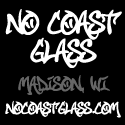Didymium (Greek: twin element) is a mixture of the elements praseodymium and neodymium.
Didymium was originally thought to be an element and was given the DI. Then discovered it is not but actually two elements combined.
Neodymium aprox $8 a pound
Praseodymium aprox $2500 a pound
So really do out filters contain praseodymium? If yes is it really needed to be able to filter the sodium flare?
If I melt a pot of neodymium which in itself is a cool glass that will change colors depending on the type of light applied. Can I cast blanks that will filter as well as didymium?
Attention Mike:
Could you please elaborate a little on these filters and the composition. I think you may be the only person here that can answer these questions.
Thanks

- Home
- Industry History
- The origins of didymium
-
 Article Categories
Article Categories -
 Recent Articles
Recent Articles
-
The origins of didymium
Published on 05-09-2014 09:23 AM Number of Views: 9730This article was originally published in forum thread: The origins of didymium started by somewhere View original post
-
 Recent Forum Posts
Recent Forum Posts
Featured Member's Spotlight!
All times are GMT -7. The time now is 12:06 PM.
Powered by: vBulletin
Copyright ©2000 - 2024, Jelsoft Enterprises Ltd.
Copyright ©2000 - 2024, Jelsoft Enterprises Ltd.
© Misha Steve/TMP 2000-2023
Owned and operated by glassblowers for glassblowers!
"don't give up. it's more than a job, it's a lifestyle." ~mer










vBulletin Message